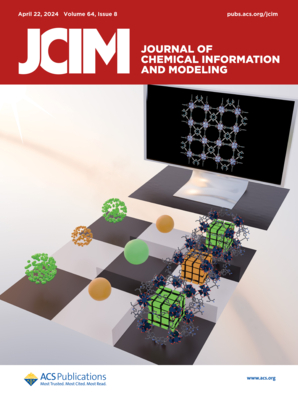基于遗传算法优化的人工神经网络金属有机骨架合成条件智能预测模型。
IF 5.3
2区 化学
Q1 CHEMISTRY, MEDICINAL
引用次数: 0
摘要
在新兴材料领域,金属有机骨架(mof)由于其独特的多孔结构,在气体吸附、储存、分离和液体过程中显示出多功能性而获得了突出的地位。然而,它们的分解、崩溃倾向和复杂的合成使得大规模生产成本高,且具有挑战性,而且没有准确的方法预测合成条件。本文提出了一种基于mof结构特征的智能预测模型来预测合成条件。建立了一种遗传算法优化的BP神经网络,通过最小冗余最大关联算法对特征进行排序,从特征选择开始。根据性能确定最优输入输出数量,然后对BP神经网络进行遗传算法优化。确定了最佳初始种群大小和隐藏节点数。该研究比较了10种模型,包括遗传算法优化的BP神经网络和简单的BP神经网络。结果表明,优化模型的R系数达到96.2%,超过了所有R值约为85%的常规方法。这种方法可以准确预测MOF合成条件,帮助材料制造精确控制合成过程,提高材料质量,减少原材料浪费。本文章由计算机程序翻译,如有差异,请以英文原文为准。
An Intelligent Prediction Model for the Synthesis Conditions of Metal-Organic Frameworks Utilizing Artificial Neural Networks Enhanced by Genetic Algorithm Optimization.
In the field of emerging materials, metal-organic frameworks (MOFs) have gained prominence due to their unique porous structures, showing versatility in gas adsorption, storage, separation, and liquid processes. However, their decomposition, collapse tendencies, and complex synthesis make large-scale production costly and challenging with no accurate method for predicting synthesis conditions. This work proposes an intelligent prediction model based on the structural characteristics of MOFs to forecast synthesis conditions. A genetic algorithm-optimized back-propagation (BP) neural network was developed, starting with feature selection via the minimum redundancy maximum relevance algorithm to rank feature importance. The optimal number of inputs and outputs was determined on the basis of performance, followed by genetic algorithm optimization of the BP neural network. The best initial population size and number of hidden nodes were identified. The study compared 10 models, including a genetic algorithm-optimized BP neural network and a simple BP neural network. The results revealed that the R coefficient of the optimized model reached 96.2%, surpassing that of conventional methods with all R values of approximately 85%. This approach allows for accurate prediction of MOF synthesis conditions, aiding material manufacturing in precise control over synthesis processes, improving material quality, and reducing raw material waste.
求助全文
通过发布文献求助,成功后即可免费获取论文全文。
去求助
来源期刊
CiteScore
9.80
自引率
10.70%
发文量
529
审稿时长
1.4 months
期刊介绍:
The Journal of Chemical Information and Modeling publishes papers reporting new methodology and/or important applications in the fields of chemical informatics and molecular modeling. Specific topics include the representation and computer-based searching of chemical databases, molecular modeling, computer-aided molecular design of new materials, catalysts, or ligands, development of new computational methods or efficient algorithms for chemical software, and biopharmaceutical chemistry including analyses of biological activity and other issues related to drug discovery.
Astute chemists, computer scientists, and information specialists look to this monthly’s insightful research studies, programming innovations, and software reviews to keep current with advances in this integral, multidisciplinary field.
As a subscriber you’ll stay abreast of database search systems, use of graph theory in chemical problems, substructure search systems, pattern recognition and clustering, analysis of chemical and physical data, molecular modeling, graphics and natural language interfaces, bibliometric and citation analysis, and synthesis design and reactions databases.

 求助内容:
求助内容: 应助结果提醒方式:
应助结果提醒方式:


